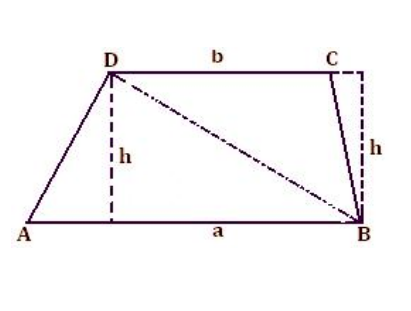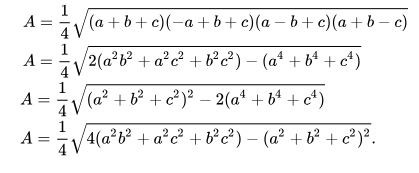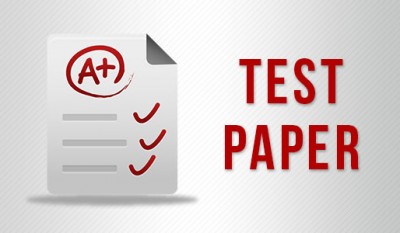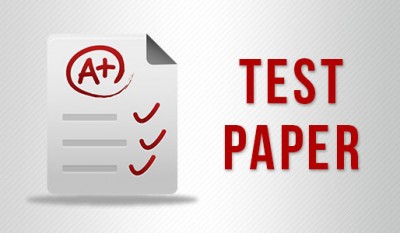State Board Commerce (XI-XII) - Test Papers
NTSE Stage 1 Sample Papers – Mental Ability
For Answers Please Click here
NTSE Stage 1 Sample Papers
For Answers Please Click here
NCERT Solutions for Class 9 Maths Chapter 12 – Heron’s Formula
NCERT Solutions for Class 9 Maths Chapter 12 PDF covers the topic of triangles, different types of triangles and the formulas to calculate the areas of triangle. The chapter also discusses Herons formula and area of trapezoid
Area of Triangle:
A triangle is a regular polygonal structure which has three sides. The sum of all angles is 180 degrees.
Area of a right- angled triangle:
A triangle in which one of the angles is right angle, then it is a right angled triangle. The sum of two sides of a triangle is greater than the third side.
Area of an equilateral triangle:
An equilateral triangle is a triangle whose all sides are equal. The formula can be found with the following formulas
where s is the length of the side of the triangle.

Area of a trapezium:
The area of triangle can be provided with two formulas
- The area of trapezium can be defined as product of half the sum of parallel sides and the perpendicular distance between the two.
= 1/2 (sum of parallel sides) × (perpendicular distance between them)
- The area of a typical trapezium can be given as sum of area of two triangles as given below

Area of trapezium ABCD = Area of ∆ ABD + Area of ∆ CBD
= 1/2 × a × h + 1/2 × b × h
= 1/2 × h × (a + b)
Heron’s Formula:
The formula was developed by Hero of Alexandria, so it called as Hero’s formula or Heron’s formula. It helps in providing the area of the triangle. Basically, area of a triangle is found based on side or vertex.
As per Heron’s formula, the area of a triangle can be represented as
Where a, b, and c represents the sides of the triangle

s is the semiperimeter of the triangle; which can be calculated by the formula
![]()
Heron’s formula can also be rewritten as

Herons formula class 9 is an important question in Class 9 NCERT solutions
NCERT Solutions for Class 9 Maths Chapter 10 – Circles
Circle, it is one of the basic shapes which we come across in our day to day life. The distance between the center of the circle and the edges remains the same from any given point on the edge. It is round in shape having a definite circumference. IN other words you can all a perfect pound as a circle.
Chord of the Circle:
It is any straight line which passes from two points of a circle.
Diameter of a circle (d):
The straight line which passes through the center and reaches the circumference on both the ends is called as diameter of a circle. The size of the diameter of a circle will be twice the size of the diameter. In simple terms, the diameter can be represented as
d= 2 r
where r is the radius
Radius of a circle (r):
The distance between the center of the circumference and the radius is called as radius.
Radius of a circle formula is r = C/2π, where C is circumference, π value is 3.14
Major Arc:
It refers to an arc of the circle whose pi radians is greater than or equal to 180 degrees.
Minor Arc:
It refers to an arc of the circle whose pi radians is less than or equal to 180 degrees.
Circumference of a circle:
This reference to the distance in a circle. The circumference of a circle is similar to the perimeter of a rectangle. The ratio between the circumference and the diameter remains constant 3.14 or π
NCERT solutions for class 9 maths chapter 10 circles pdf explains you the topic of radius, circumference, diameter, major and minor arc with examples
NCERT Solutions for Class 9 Maths Chapter 9 – Areas of Parallelograms and Triangles
Class 9 Maths chapter 9 solutions pdf has a number of questions on area of triangle and area of parallelogram. Practice the solutions as many times as possible to master the chapter!
Area of Triangle:
A triangle has three sides which are joined to each other. A triangle in which of the angle is 90 degrees then it is called as right-angled triangle.
The area of a triangle can be given as the product of half the base and height. It can be represented as
Area= ½ b*h
Where b is base and h is height
There are different methods with which area can be calculated provided either base and height, length of the sides using Herons; formula, side-angle-side, equilateral triangle, two vectors from one vertex, etc, is given
Area of Parallelogram:
A parallelogram is a geometrical shape in which two sides of the quadrilateral are parallel to each other. The parallel lines are equal in length and the opposite angles of a parallelogram are equal to each other. Parallelogram is a flat shape is a flat shaped object. In a parallelogram opposite sides and the opposite angles are congruent to each other. The consecutive angles are supplementary. The area of a parallelogram can be given by the formula
A = b*h
A: Area of the parallelogram
b: base
h: height
NCERT Solutions for Class 9 Maths Chapter 8 – Quadrilaterals
A Quadrilateral has four-sides, it is 2-dimensional (a flat shape), closed (the lines join up), and has straight sides.
Characteristics of a Quadrilateral
- A quadrilateral has 4 sides, 4 angles and 4 vertices.
- A quadrilateral can be regular or irregular.
- The sum of all the interior angles of a quadrilateral is 360 degree.
Properties of Parallelogram
There are six important properties of parallelograms to acknowledge:
- Opposite sides are congruent (AB = DC).
- Opposite angels are congruent (D = B).
- Consecutive angles are supplementary (A + D = 180°).
- If one angle is right, then all angles are right.
- The diagonals of a parallelogram bisect each other.
- Each diagonal of a parallelogram separates it into two congruent
Types of Quadrilaterals
There are five types of quadrilaterals. The following are:
Parallelogram
A parallelogram has opposite sides parallel and equal in length. It also has opposite angles are equal.
Rectangle
A rectangle is a four-sided shape where every angle is a right angle (90°). It also has opposite sides are parallel and of equal length.
Rhombus
A rhombus is a four-sided shape where all sides have equal length. Its opposite sides are parallel and opposite angles are equal. Another interesting thing is that the diagonals (dashed lines in second figure) meet in the middle at a right angle. In other words they “bisect” (cut in half) each other at right angles. A rhombus is sometimes called a rhomb or a diamond.
Square
A square has equal sides and every angle is a right angle (90°). It also has opposite sides are parallel. A square also fits the definition of a rectangle (all angles are 90°), and a rhombus (all sides are equal length).
For more details refer to ncert solutions for class 9 maths chapter 8 pdf.











